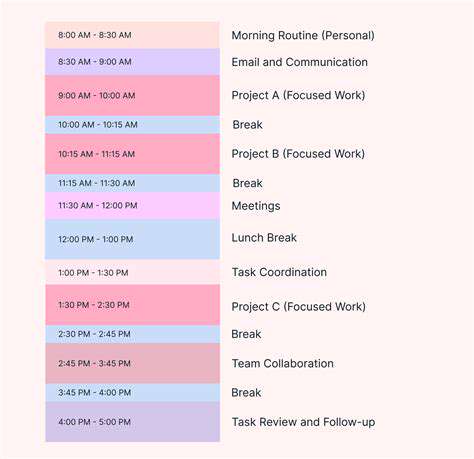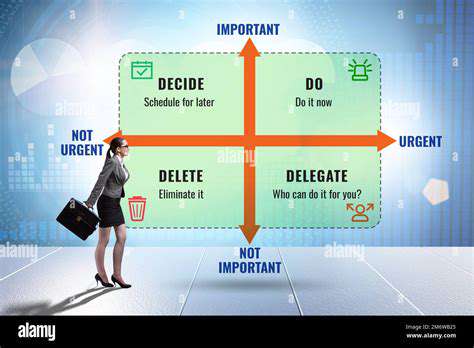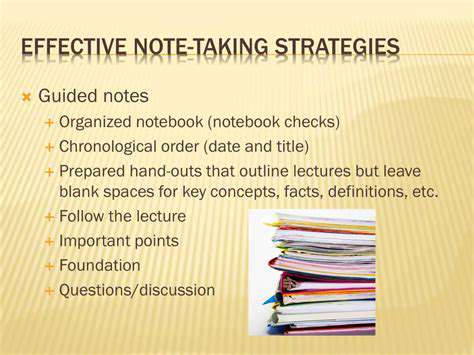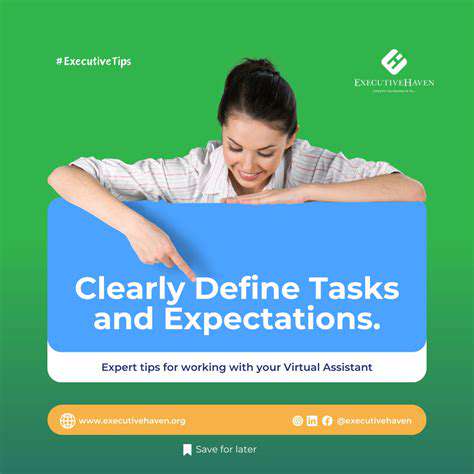Guide to Learning in Different Environments
Creating a Personalized Learning Space
Designing an effective home learning environment involves more than just furniture arrangement. The most successful spaces incorporate personal motivational elements - perhaps an inspiration board, meaningful artwork, or even strategic color choices. Cool blues and greens often promote calm focus, while warmer accents can energize during afternoon slumps. The key lies in creating visual anchors that subconsciously reinforce your learning mindset each time you enter the space.
Temperature control plays an underappreciated role in study effectiveness. Many find slightly cooler temperatures (around 68-72°F) ideal for concentration, as warmer environments can induce drowsiness. Air quality matters too - a small air purifier or regular ventilation can prevent the stuffiness that leads to mental fatigue. Some learners incorporate subtle aromatherapy elements, like peppermint or citrus scents, which some studies suggest may enhance alertness.
Maximizing Comfort for Extended Study Sessions
Physical comfort directly correlates with mental endurance during long study periods. Beyond ergonomic chairs, consider anti-fatigue mats for standing desks, or even under-desk footrests to promote circulation. The positioning of frequently used items - textbooks, water bottles, notebooks - should follow natural movement patterns to minimize disruptive reaching or twisting. These small ergonomic adjustments collectively prevent the minor discomforts that gradually erode focus over hours of study.
Periodic micro-breaks prove more effective than occasional long pauses. Setting a timer for brief 30-60 second stretches every 20-30 minutes helps maintain both physical comfort and mental freshness. Some learners keep small resistance bands or stress balls nearby for these mini-pauses, creating physical counterpoints to intense cognitive work.
Controlling Distractions in Your Home Study
Modern homes brim with potential interruptions, requiring proactive management strategies. Physical separation from high-traffic areas helps, but technological boundaries prove equally crucial. Many successful learners maintain a separate user profile on their devices for study sessions, with notifications disabled and distracting websites blocked. This digital compartmentalization creates psychological barriers similar to physical space divisions, making it easier to maintain focus.
For shared living spaces, visual signals can communicate your need for concentration without constant verbal reminders. A simple sign, special lamp, or even distinctive clothing item (like a particular hat or scarf) can signal housemates that you're in study mode. Over time, these consistent visual cues train both yourself and others to respect your focused time.
Temple headaches, those frustrating pains along the sides of the head, frequently stem from overlooked causes. Prolonged screen time, improper lighting, and poor posture often contribute more than we realize. Recognizing these subtle triggers allows for more effective prevention strategies.
The Classroom: Collaboration and Interaction

The Importance of Collaborative Learning
Group learning environments create unique cognitive synergies impossible to replicate individually. As students explain concepts to peers, they often uncover gaps in their own understanding - a phenomenon psychologists call the protégé effect. This teaching-as-learning dynamic strengthens neural pathways more effectively than passive reception of information. The social accountability inherent in group work also motivates deeper engagement with material.
Effective collaboration requires careful structure. Random grouping often proves less productive than intentional team composition balancing different strengths. Some instructors use personality assessments or learning style inventories to create complementary groups. Clear role assignments (researcher, organizer, presenter, etc.) prevent diffusion of responsibility while allowing students to play to their strengths.
Technology's Role in Enhancing Classroom Interaction
Modern digital tools have transformed collaborative possibilities beyond physical classroom walls. Cloud-based document editing allows real-time collective brainstorming, while specialized educational platforms enable threaded discussions that deepen over time. These technologies create persistent learning spaces where ideas develop continuously, rather than being confined to specific class periods.
The most effective tech integration follows pedagogical purpose rather than novelty. For instance, using polling software to gauge conceptual understanding in real time allows instructors to adjust lessons dynamically. Virtual whiteboards can capture evolving group thought processes in ways traditional methods cannot, creating valuable artifacts for later review.
Cultivating a Positive Learning Environment
The emotional tone of a classroom significantly impacts collaborative success. Instructors who model respectful disagreement and intellectual curiosity create safe spaces for risk-taking. Simple practices like no interruptions rules during sharing, or structured turn-taking protocols, ensure all voices are heard. This intentional culture-building pays dividends in the depth and quality of collaborative work throughout a course.
Nonverbal elements contribute significantly to classroom climate. Furniture arrangement that facilitates eye contact, acoustics that allow clear hearing without straining, and even lighting that's bright enough to read but soft enough to prevent glare - all these physical factors subtly influence how comfortably students engage with each other.
Read more about Guide to Learning in Different Environments
Hot Recommendations
- How to Stay Productive While Working Remotely
- Tips for Managing Conflict with Coworkers
- Entrance & Certification Exams (升学考试)
- How to Improve Your Storytelling Skills (Speaking)
- How to Find Profitable Side Hustles
- Tips for Preparing for the TOEFL iBT Home Edition
- Guide to Switching Careers from [Industry A] to [Industry B]
- How to Run an Effective Hybrid Meeting
- Tips for Marketing Your Side Hustle on Instagram











